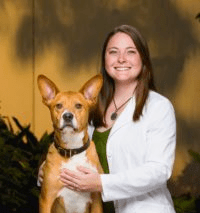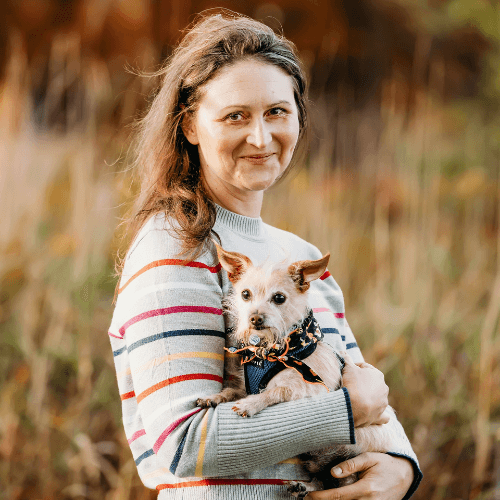A Discussion on Dog Cancer with Veterinarians
Dog Cancer: Symptoms, Diagnosis, and Treatment
The dreaded cancer diagnosis is every pet owner’s worst fear despite every effort to prevent cancer in your pets, just as it is with our own health and those we love. Nearly every cancer that humans can get can also be diagnosed in dogs, therefore a constant awareness of signs and symptoms is critical for a quick diagnosis and treatment. If you’ve questioned cancer-like symptoms in your dog, you probably went straight to Google to get your questions answered and ease your worry. At GeniusVets, we believe that pet care information should come from veterinarians and not the internet, especially with a topic as serious as dog cancer. That’s why we’ve taken dog cancer FAQs, sent these questions to renowned veterinarians across the U.S., and compiled their replies to provide you with information you can trust.
While we've sourced all of the dog cancer information and recommendations below directly from leading veterinarians across the country, please make sure to seek out the advice of your own veterinarian or find a trusted vet near you using the GeniusVets Directory. And if you suspect your dog may have cancer, please do so right away, as quick treatment is vital.
Is cancer in dogs common?
Unfortunately, cancer in dogs is relatively common and veterinarians see a fair amount of it as dogs age. It’s typically seen in dogs after the age of nine, with the latest statistics showing that pets have a 50% chance of developing some type of cancer in their lifetime.
What are the common types of cancer in dogs?
Nearly every type of cancer that humans can get is also seen in dogs.
Some of the more common cancers we see in dogs include:
- Skin cancers – Lumps and bumps on your dog, or mast cell disease such as melanoma.
- Brain tumors – Hemangiosarcoma is a fairly common cancer seen in some larger breeds.
- Lymphoma – Cancer of the lymph system or lymph nodes.
- Bladder cancer – Cancer of the urinary tract can affect the kidneys, uterus, prostate, and urethra, with the bladder being the most commonly affected.
- Mammary gland tumors – Prevalent in female dogs that were spayed later in life, or not spayed at all.
- Oral cancers – Cancers of the mouth are twice as likely to occur in male dogs than females.
- Hemangiosarcoma – Cancer of the spleen and liver, most commonly in German Shepherds, Golden Retrievers, and Labrador Retrievers.
- Bone cancers – These cancers such as Osteosarcoma can be very problematic for dogs, causing overall discomfort and sometimes leading to limb loss.
What are some of the signs and symptoms of dog cancer?
Much like people often have no idea a tumor is growing inside them, the same is true for dogs. Many of them don't exhibit any symptoms, so veterinarians conduct annual exams to screen for cancer. When they palpate your dog or feel your dog's abdomen as part of an exam, they'll often discover a large spleen or a tumor. They’ll also see lumps and bumps on the body, many of which will end up being benign. Your veterinarian will also palpate the lymph nodes for signs of enlargement, and conduct an oral exam for cancers in the mouth.
Signs of internal cancers in dogs include:
- Weight loss
- Lack of appetite
- Recurrent gastrointestinal problems
- Abdominal swelling
- Breathing difficulties
Unfortunately, these signs of internal cancers usually present themselves when the cancer has progressed to an advanced stage. For this reason, annual exams are essential, but you should also be looking for anything out of the ordinary on a regular basis.
Why is early detection of dog cancer so important?
When dog cancers are discovered early, your veterinarian can begin treatment quickly or perform surgery, both of which could mean a better prognosis. Most cancers are more amenable to being removed, like tumors. If they're detected early when they're smaller, they’re less likely to have spread to other parts of the body.
How would a veterinarian diagnose cancer in my dog?
Diagnosing cancer in your dog involves a combination of understanding their medical history, and perhaps finding a bump at home or during an exam. Your veterinarian may take chest films to take a closer look, and do lab work that might offer clues about what is happening with your dog. If their white blood cell count is very high, or if the red blood cell count is very low, those markers can be signs of cancer. X-rays and abdominal ultrasounds are also vital, and sometimes an ultrasound of the chest is necessary.
Veterinarians also perform a lot of biopsies of lumps, including needle biopsies and punch biopsies to make sure they're benign. Fine needle aspirate is when a veterinarian sticks a needle into a solitary tumor, or multiple tumors they can see and feel. The sample is put on a slide and looked at under a microscope, which is sometimes diagnostic. Sometimes your pet will need to be sedated so your veterinarian can take a little piece of the lump or bump and send it to a laboratory for histopathology. They analyze it and give your veterinarian a diagnosis of what it is and sometimes how aggressive it is. In some cases, they will remove the entire tumor and do histopathology, and a lab can let them know whether it had reasonable margins, whether they got it all, and what its recurrence rate might be.
What treatment options are available to dogs with cancer?
Surgery is usually an option, as well as chemotherapies and radiation. Some alternative therapies are also available, such as Chinese herbal medications or other alternative modalities. Everything that is available for humans is almost always available for dogs as well, depending on the prognosis. We might not recommend treatment for dogs that are older or in poor health already, but there are excellent options to prolong a high quality of life for other dogs. Certain cancers can be completely cured if caught early, such as mast cell cancers, so it's vital to work as a partner with your veterinarian to catch signs early.
What are some possible side effects caused by cancer treatment?
Just as with humans, radiation therapies and chemotherapies can cause side effects in dogs. Some will tolerate treatment better than others, with some experiencing no symptoms at all while others have substantial side effects. Dogs tend to tolerate chemo better than humans do, and there are medications for nausea to help them through the process. The most common side effect of cancer treatment is an upset stomach, along with vomiting and often lack of appetite.
The AVMA offers additional insight about cancer in pets, including diagnosis, treatment, and success rates. If you have further questions about dog cancer, reach out to your veterinarian. If you don't have one yet, we can help you find a local veterinarian!
The Following Veterinarians
Contributed To The Dog Cancer Information On This Page


The Ultimate Guide
to Dog Care
This free guide is an indispensable manual for dog ownership. Filled with veterinary advice and recommendations on every important topic at each stage of your dog’s life, this is all the stuff that responsible dog owners need to know. That is why we are making it free!






